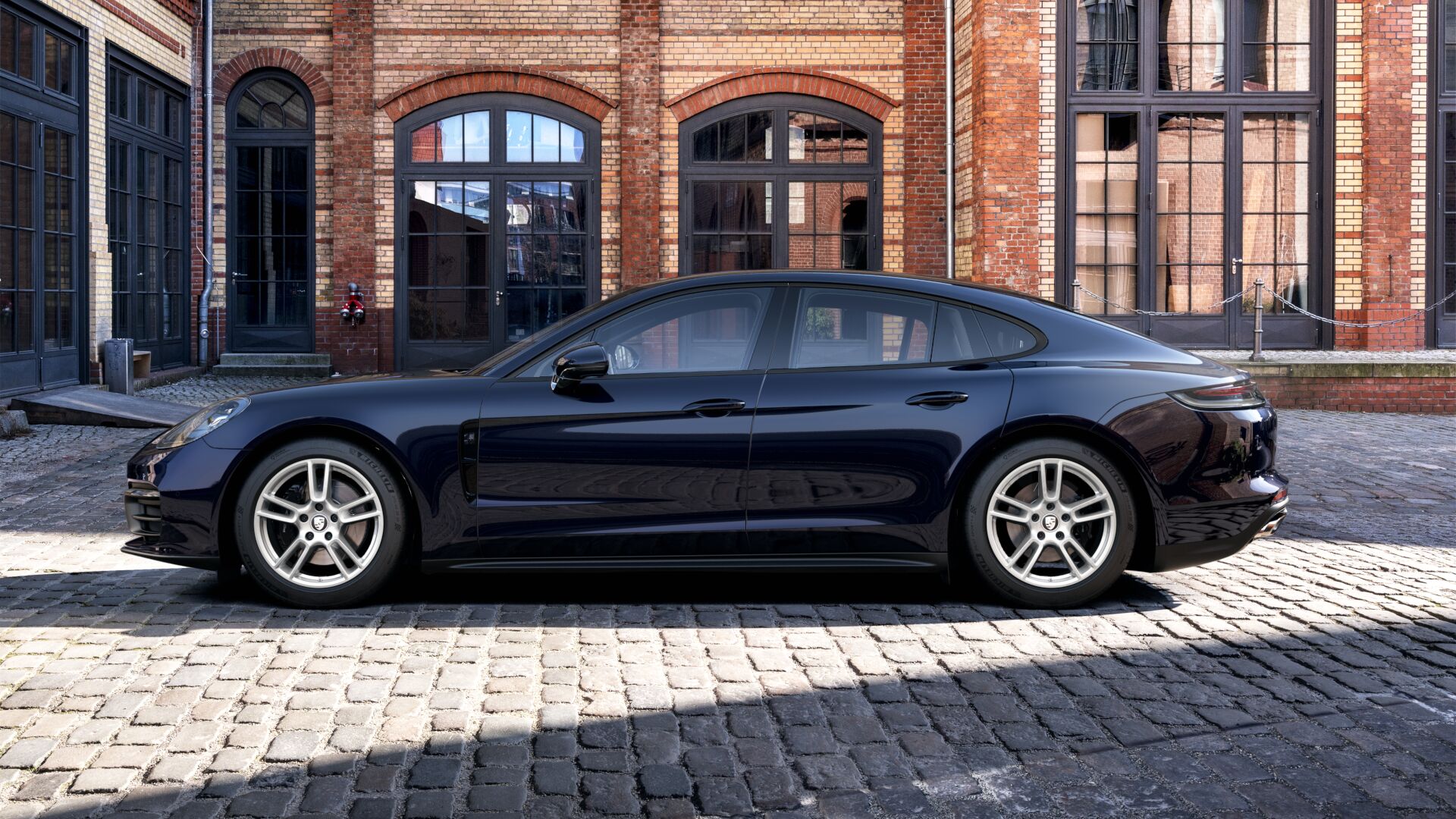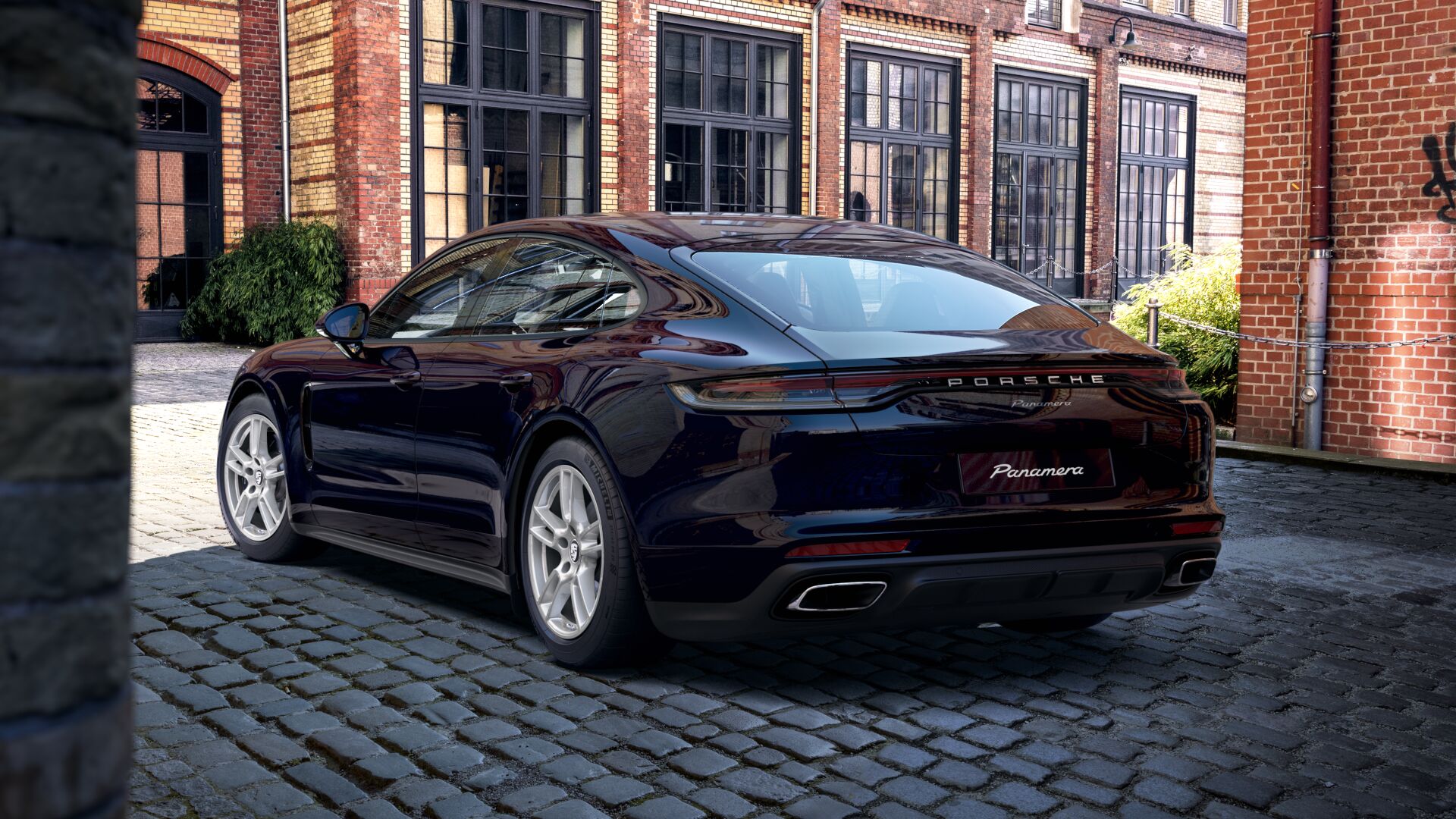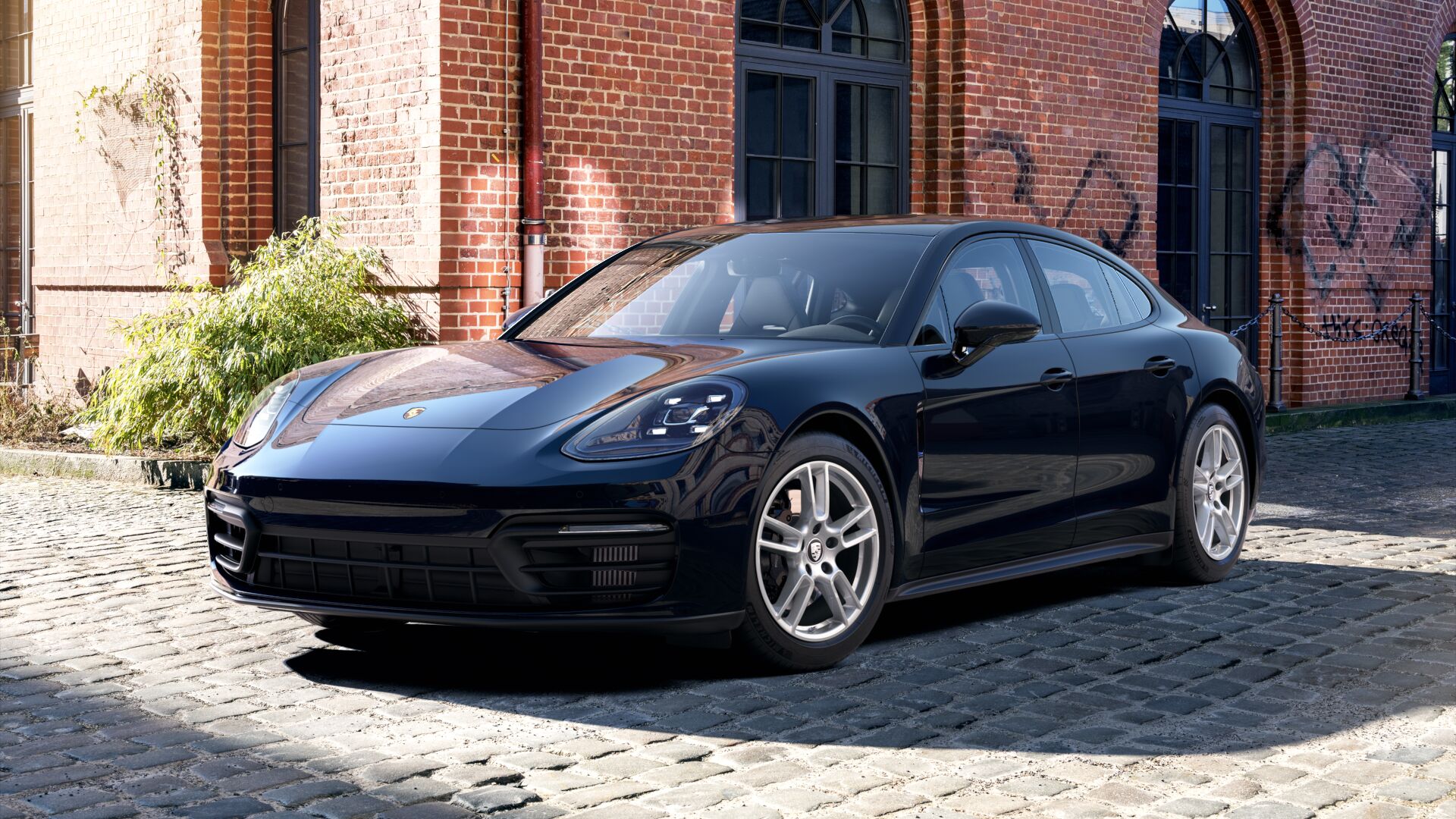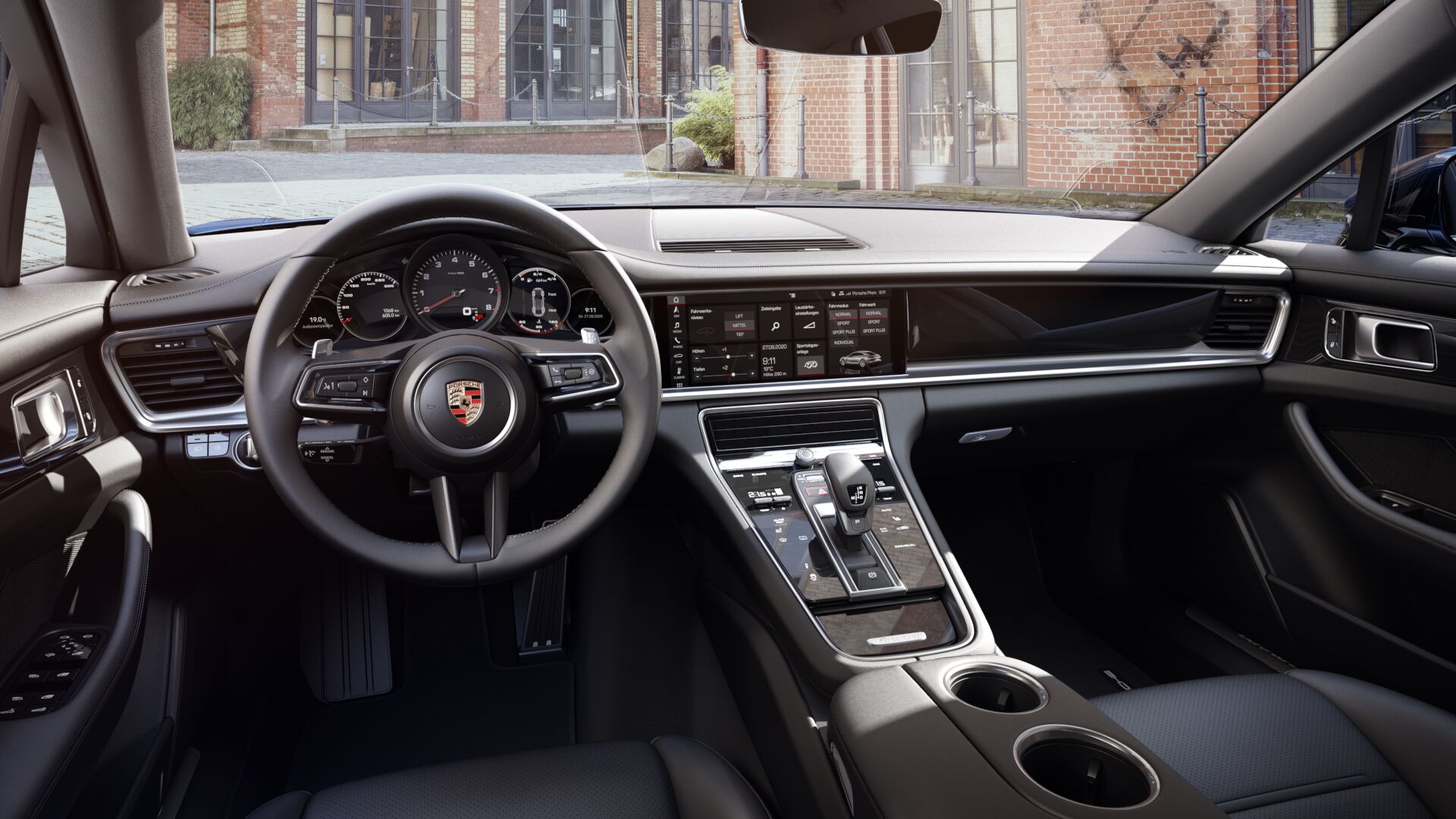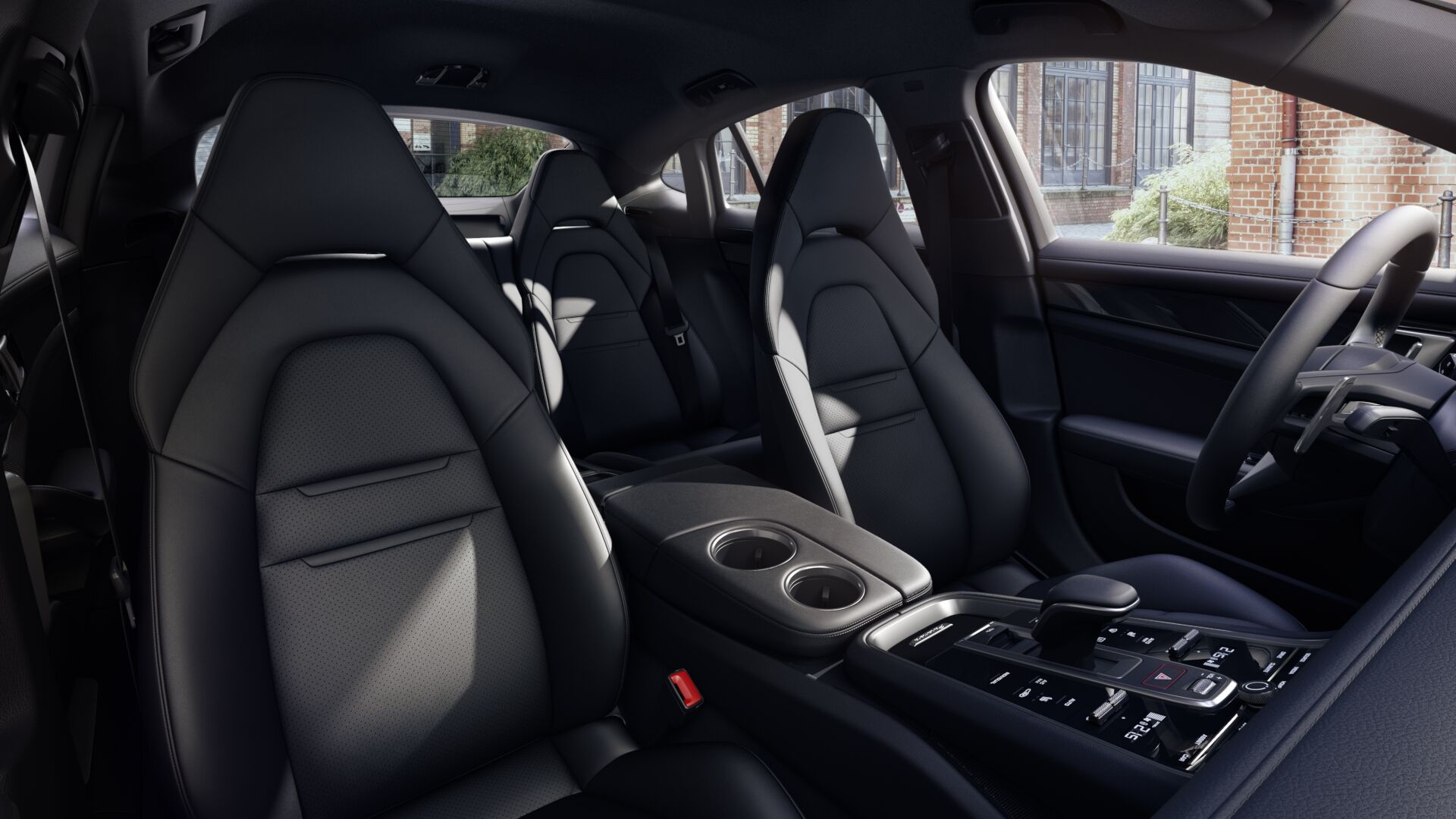Current Porsche Panamera (Base) – Ultimate Guide
For the 2021 model year, the Panamera featured a redesigned front fascia, with a different bumper and lower apron. The previously optional Sport Design front end was featured as standard on the facelifted version. In the back, the revamped light strip ran seamlessly over the trunk lid, with an adapted contour and new LED taillights were installed. The three-piece retractable wing was kept.
The interior of the 2020 Panamera featured the already known Porsche Communication Management infotainment system with a 12.3” touch-screen display mounted at the same level as the steering wheel, on top of the center stack. It featured the improved Voice Pilot online voice control and wireless Apple CarPlay. Porsche didn’t say anything about the Android Auto connectivity. Under the hood, the Porsche Panamera featured a twin-turbo V6 engine, good for 330 hp. It was carried-over from the non-facelifted version. The 7-speed PDK (dual-clutch) automatic transmission was fitted as standard. It was the only option available.
Pictures
Press Release
A unique symbiosis of contrasts: the new Porsche Panamera now covers an even wider spectrum. It combines the performance of a sports car with the comfort of an exclusive saloon. With the 463 kW (630 PS) Panamera Turbo S, the sports car manufacturer successfully supports its claim to best-in-class performance. The new top-of-the-range model betters the performance figures of the previous Panamera Turbo by a wide margin. Porsche also continues to pursue its E-Performance strategy. The Panamera 4S E-Hybrid is a new addition to the range of plug-in hybrids, offering a completely new drive system with 412 kW (560 PS) system output. Compared with the previous hybrid models, the all-electric range has been boosted by up to 30 per cent. Comfort and sportiness both benefit from enhanced chassis components and control systems in combination with the new-generation steering control and tyres.
Turbo S: from zero to 100 km/h in 3.1 seconds
With a power output of 463 kW (630 PS) and a torque of 820 newton metres, the new Porsche Panamera Turbo S offers 59 kW (80 PS) more power and 50 Nm more torque than the previous flagship Turbo with combustion engine. This has a very positive effect on driving performance: in Sport Plus mode, the Turbo S model accelerates from 0 – 100 km/h in just 3.1 seconds. Developed in Weissach and built in Zuffenhausen, the familiar four-litre V8 biturbo engine has been comprehensively overhauled to enable the car to achieve a top speed of 315 km/h. In order to transfer the enormous power to the road in a controlled manner and maximise cornering performance, the three-chamber air suspension, the Porsche Active Suspension Management (PASM) and the roll stabilisation system Porsche Dynamic Chassis Control Sport (PDCC Sport) including Porsche Torque Vectoring Plus (PTV Plus) have been customised to each specific model and optimised accordingly.
The new Porsche Panamera Turbo S has already proven its uncompromising performance capability on the legendary Nürburgring Nordschleife: test driver Lars Kern completed the 20.832 kilometre-long lap on the most demanding race track in the world in exactly 7:29.81 minutes – the new official record in the “executive cars” class.
Increased sportiness and comfort thanks to optimised chassis systems
The V8 biturbo engine in the Porsche Panamera GTS was optimised with a specific focus on its power delivery. With 353 kW (480 PS) and 620 Nm, the new Panamera GTS delivers 15 kW (20 PS) more power than its predecessor. The power output continuously increases up to close to the engine speed limit. The power delivery is therefore like that of a classic sports car with naturally aspirated engine. The traditional V8 sound characteristics are even more prominent than before thanks to the new standard sports exhaust system featuring asymmetrically positioned rear silencers.
The new Porsche Panamera and Panamera 4 are now equipped with the familiar 2.9-litre V6 biturbo engine in all markets worldwide. Delivering 243 kW (330 PS) and 450 Nm, the performance remains unchanged.
The chassis and control systems have been geared towards a sporty and also comfortable character for all new Panamera models. Some systems have even been applied completely from scratch. For example, the revamped Porsche Active Suspension Management (PASM) system results in a noticeable improvement in damping comfort, while the control of the electric roll stabilisation system Porsche Dynamic Chassis Control Sport (PDCC Sport) ensures improved body stability. There is also a new equipment generation for the steering control and tyres.
4S E-Hybrid with 17.9 kWh battery and an electric range of up to 54 km
Porsche is presenting a further performance-oriented plug-in hybrid model with the new Panamera 4S E-Hybrid. The intelligent combination of the 100 kW (136 PS) electric motor integrated into the eight-speed dual-clutch PDK transmission and the 2.9-litre V6 biturbo engine with 324 kW (440 PS) generates a system output of 412 kW (560 PS) and a maximum system torque of 750 Nm. The performance figures are therefore very impressive: combined with the standard Sport Chrono Package, the sprint from 0 – 100 km/h is covered in 3.7 seconds. The top speed is 298 km/h. The gross battery capacity has been increased from 14.1 to 17.9 kWh compared with the previous hybrid models using optimised cells and the driving modes have been optimised for even more efficient energy utilisation. The Porsche Panamera 4S E-Hybrid has an all-electric range of up to 54 km in accordance with WLTP EAER City (NEDC: up to 64 km).
Sharper visual appearance for greater presence
The new Porsche Panamera models – in addition to the sports saloon, they can also be ordered as Sport Turismo or Executive with lengthened wheelbase, depending on the drive system – are now equipped from the factory with the previously optional Sport Design front end with striking air intake grilles, large side cooling openings and a single-bar front light module. The completely new front end of the Panamera Turbo S is differentiated by the larger side air intakes and newly designed elements in the exterior colour, which are connected horizontally and thus emphasise the width of the vehicle. The light modules of the dual Turbo front lights are now set much further apart.
The revamped light strip at the rear now runs seamlessly over the luggage compartment lid with an adapted contour. It thus provides a continuous and flowing connection between the two newly designed LED tail light clusters. GTS models sport the new darkened Exclusive Design tail light clusters as standard with dynamic coming/leaving home function. Three new 20- and 21-inch wheels have been added to the wheel range, so that a total of 10 different designs are now available.
Digital connectivity and assistance systems for safety and comfort
The Porsche Communication Management (PCM) includes additional digital functions and services such as the improved Voice Pilot online voice control, Risk Radar for up-to-date road sign and hazard information, wireless Apple® CarPlay and many other Connect services. The Panamera also offers an extensive range of innovative light and assistance systems, such as the now standard Lane Keeping Assist with road sign recognition, as well as Porsche InnoDrive including adaptive cruise control, Night Vision Assist, Lane Change Assist, LED matrix headlights including PDLS Plus, Park Assist including Surround View and head-up display.
The new Porsche Panamera is available to order now and will be in dealerships in the middle of October 2019. In Germany, prices start at 91,345 euros for the rear-wheel-drive Panamera. All other models come with all-wheel drive: prices start from 95,289 euros for the Panamera 4, from 126,841 euros for the Panamera 4S E-Hybrid, from 136,933 euros for the Panamera GTS and from 179,737 euros for the Panamera Turbo S – in each case including value-added tax and country-specific equipment.


